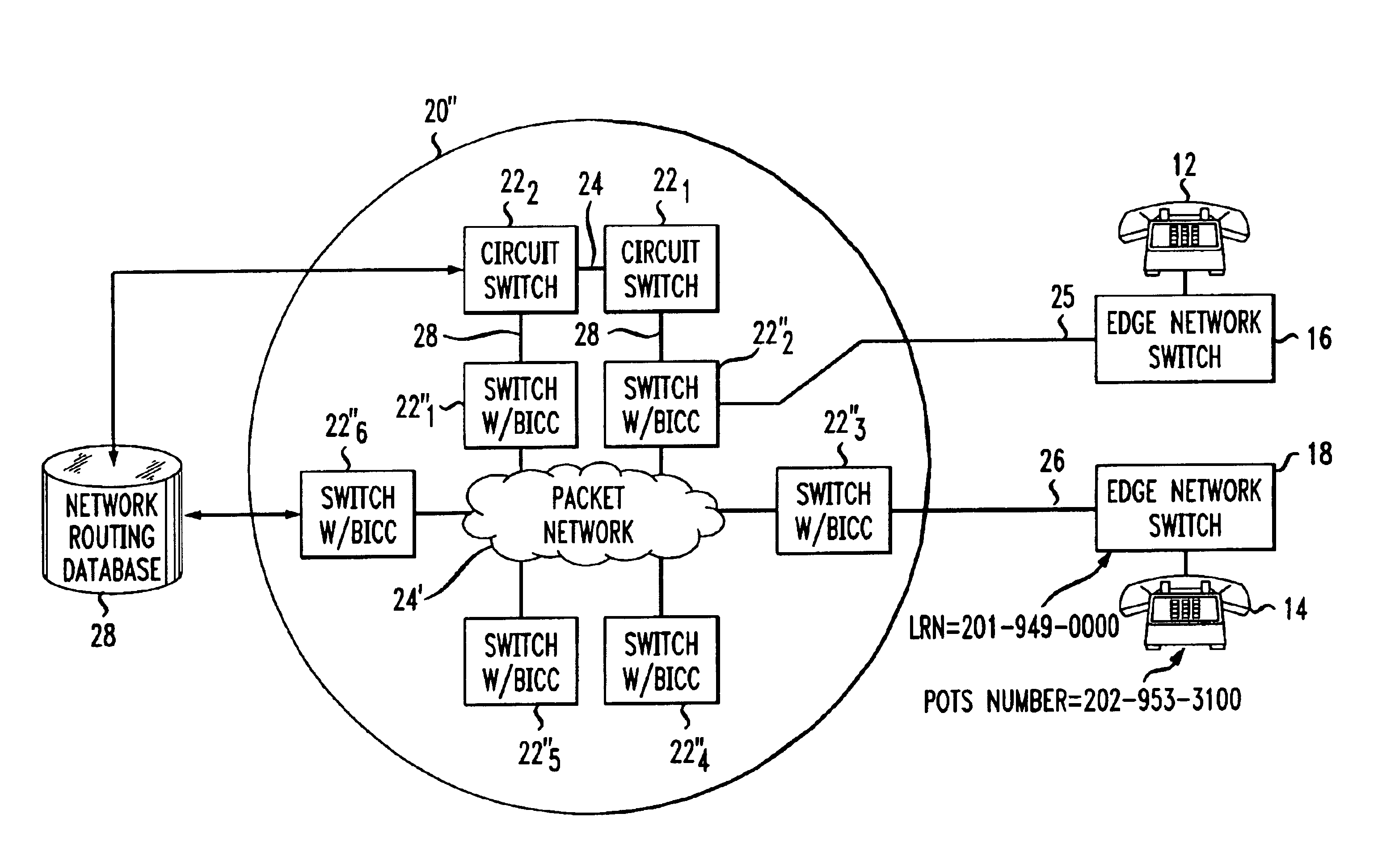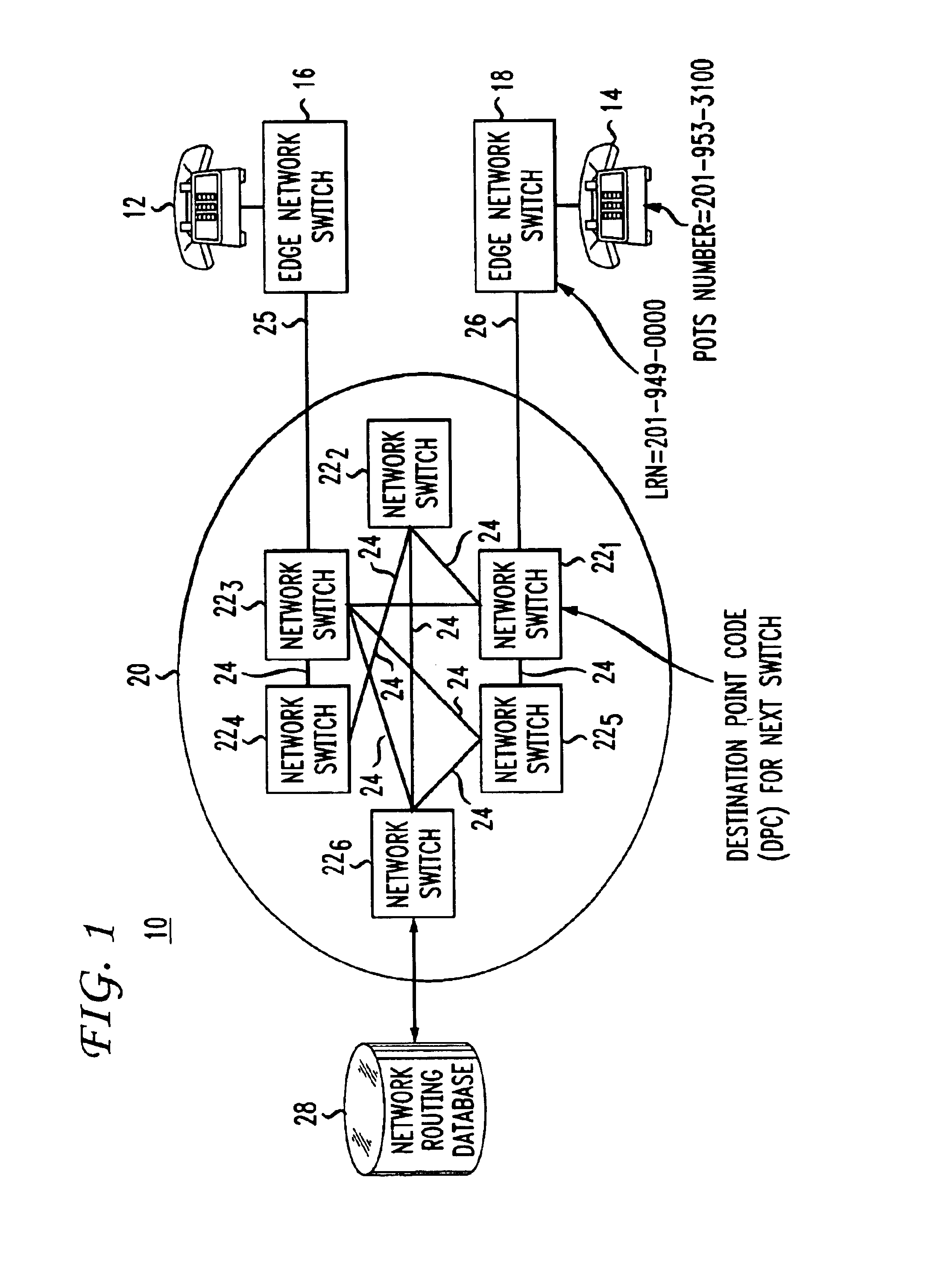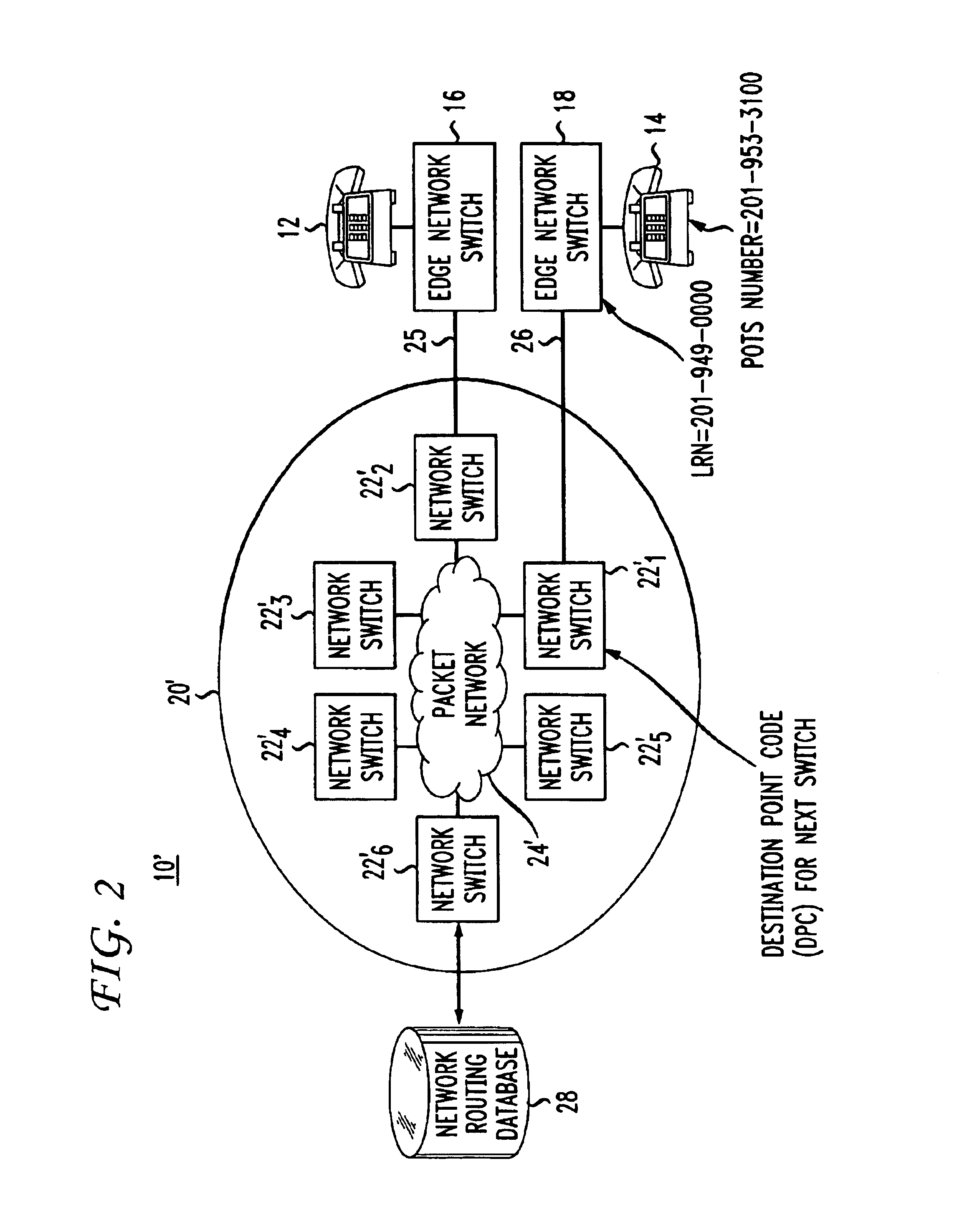Method and apparatus for providing telecommunications services
a technology for telecommunication services and telephone calls, applied in the direction of data switching networks, digital transmission, interconnection arrangements, etc., can solve the problems of frequent routing changes, high cost and time consumption, and the inability to modify present-day switches to accept such special interfaces
- Summary
- Abstract
- Description
- Claims
- Application Information
AI Technical Summary
Benefits of technology
Problems solved by technology
Method used
Image
Examples
Embodiment Construction
FIG. 1 depicts a block schematic diagram of a circuit-switched telecommunications network 10 for routing a telephone call from a calling party, represented by a first telephone set 12, to a called party, represented by a second telephone set 14. In the illustrated embodiment of FIG. 1, the telephone sets 12 and 14 receive local telephone service (e.g., dial tone) from edge switches 16 and 18, respectively, each linked to, but lying outside and at the edge of an Inter-exchange Carrier (IXC) network 20, such as the inter-exchange network maintained by AT&T. In practice, each edge switch may comprise a class 5 central office switch, such as the 5ESS switch now manufactured by Lucent Technologies, Inc., or a DMS 100 switch manufactured by Nortel Networks, Inc. The edge switches 16 and 18 could belong to a single provider of local service, or could belong to separate local service providers. Alternatively, one or both of the edge switches 16 and 18 could serve as an extension of the IXC ...
PUM
 Login to View More
Login to View More Abstract
Description
Claims
Application Information
 Login to View More
Login to View More - R&D
- Intellectual Property
- Life Sciences
- Materials
- Tech Scout
- Unparalleled Data Quality
- Higher Quality Content
- 60% Fewer Hallucinations
Browse by: Latest US Patents, China's latest patents, Technical Efficacy Thesaurus, Application Domain, Technology Topic, Popular Technical Reports.
© 2025 PatSnap. All rights reserved.Legal|Privacy policy|Modern Slavery Act Transparency Statement|Sitemap|About US| Contact US: help@patsnap.com



